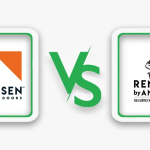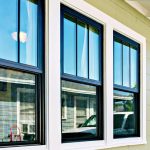There are many different ways to reduce your household’s energy use, ranging from simple behavioral adjustments to extensive home improvements. The two major motives for conserving energy are to save on utility bills and energy usage. Here are the ten most common ways to conserve energy and save electricity in your home, listed from the simplest to the most intensive methods.
Top 10 Ways to Save Energy At Home
![]() Adjust your day-to-day behaviors
Adjust your day-to-day behaviors
To reduce energy consumption in your home, you do not necessarily need to go out and purchase energy efficient products. Energy conservation can be as simple as turning off lights or appliances when you do not need them. You can also use energy-intensive appliances less by performing household tasks manually, such as hang-drying your clothes instead of putting them in the dryer, or washing dishes by hand.
The behavior adjustments that have the highest potential for utility savings are turning down the heat on your thermostat in the winter and using your air conditioner less in the summer. Heating and cooling costs constitute nearly half of an average home’s utility bills, so these reductions in the intensity and frequency of heating and cooling offer the greatest savings.
![]() Replace your light bulbs
Replace your light bulbs
Traditional incandescent light bulbs consume an excessive amount of electricity and must be replaced more often than their energy efficient alternatives. Halogen incandescent bulbs, compact fluorescent lights (CFLs), and light-emitting diode bulbs (LEDs) use anywhere from 25-80 percent less electricity and last 3 to 25 times longer than traditional bulbs.
Although energy efficient bulbs are more expensive off the shelf, their efficient energy use and longer lifetimes mean that they cost less in the long run.
![]() Use smart power strips
Use smart power strips
“Phantom loads,” or the electricity used by electronics when they are turned off or in standby mode, are a major source of energy waste. In fact, it is estimated that 75% of the energy used to power household electronics is consumed when they are switched off, which can cost you up to $200 per year. Smart power strips, also known as advanced power strips, eliminate the problem of phantom loads by shutting off the power to electronics when they are not in use. Smart power strips can be set to turn off at an assigned time, during a period of inactivity, through remote switches, or based on the status of a “master” device.
![]() Install a programmable or smart thermostat
Install a programmable or smart thermostat
A programmable thermostat can be set to automatically turn off or reduce heating and cooling during the times when you are asleep or away. When you install a programmable thermostat, you eliminate wasteful energy use from heating and cooling without upgrading your HVAC system.
On average, a programmable thermostat can save you $180 per year. Programmable thermostats come in different models that can be set to fit your weekly schedule. Additional features of programmable thermostats can include indicators for when to replace air filters or HVAC system problems, which also improve the efficiency of your heating and cooling system.
![]() Purchase energy efficient appliances
Purchase energy efficient appliances
On average, appliances are responsible for roughly 13% of total household energy use. When purchasing an appliance, you should pay attention to two numbers: the initial purchase price and the annual operating cost. Although energy efficient appliances might have higher upfront purchase prices, their operating costs are often 9-25% lower than conventional models.
When purchasing an energy efficient appliance, you should look for appliances with the ENERGY STAR label, which is a federal guarantee that the appliance will consume less energy during use and when on standby than standard models. Energy savings differ based on the specific appliance. For example, ENERGY STAR certified clothes washers consume 25% less energy and 45% less water than conventional ones, whereas ENERGY STAR refrigerators use only 9% less energy.
![]() Reduce your water heating expenses
Reduce your water heating expenses
Water heating is a major contributor to your total energy consumption. Other than purchasing an energy efficient water heater, there are three methods of reducing your water heating expenses: you can simply use less hot water, turn down the thermostat on your water heater, or insulate your water heater and the first six feet of hot and cold water pipes.
If you are considering replacing your water heater with an efficient model, you should keep in mind two factors: the type of water heater that meets your needs and the type of fuel it will use. For example, tankless water heaters are energy efficient, but they are also a poor choice for large families as they cannot handle multiple and simultaneous uses of hot water. Efficient water heaters can be anywhere between 8% and 300% more energy efficient than a conventional storage water heater.
![]() Install energy efficient windows
Install energy efficient windows
Windows are significant source of energy waste – they can add up to 10-25% of your total heating bill. To prevent heat loss through your windows, you can replace single-pane windows with double-pane products instead.
For homes in colder regions, gas-filled windows with “low-e” coatings can significantly reduce your heating expenses. In addition, interior or exterior storm windows can reduce unnecessary heat loss by 10 to 20 percent. You should especially consider storm windows if your region experiences frequent extreme weather events.
In warmer climates, heat gain through windows may be a problem. In addition to minimizing heat loss, low-e coatings on windows can reduce heat gain by reflecting more light and lowering the amount of thermal energy that enters your home.
![]() Upgrade your HVAC system
Upgrade your HVAC system
An HVAC system is composed of heating, ventilation, and air conditioning equipment. Heating alone is responsible for more than 40% of home energy use. Upgrading to an ENERGY STAR certification can save you up to 16% on energy consumption per year in Minnesota.
Air conditioning, by comparison, isn’t a significant contributor to energy bills – on average, it only makes up six percent of the total energy use of your home. ENERGY STAR central air conditioning units are eight percent more efficient than conventional models. Air conditioning systems are usually integrated with heating systems, which means that you should purchase your new furnace and air conditioner at the same time in order to ensure that the air conditioner performs at its maximum rated energy efficiency.
![]() Weatherize your home
Weatherize your home
Weatherizing, or sealing air leaks around your home, is a great way to reduce your heating and cooling expenses. The most common sources of air leaks into your home are vents, windows, and doors. To prevent these leaks, you should ensure that there are no cracks or openings between the wall and vent, window, or door frame.
Air leaking out of your home is most often from the home interior into your attic through small openings. Whether it is through ducts, light fixtures, or the attic hatch, hot air will rise and escape through small openings. As the natural flow of heat is from warmer to cooler areas, these small openings can make your heating bill even higher if your attic is not sufficiently insulated. To reap the full amount of savings from weatherization, you should consider fully insulating your home.
![]() Insulate your home
Insulate your home
Insulation plays a key role in lowering your utility bills through retaining heat during the winter and keeping heat out of your home during the summer. The recommended level of heat resistance, or “R-value,” for your insulation depends on where you live. In warmer climates, the recommended R-value is much lower than for buildings located in colder regions like the Northeast.
The level of insulation you should install depends on the area of your house. Your attic, walls, floors, basement, and crawlspace are the five main areas where you should consider adding insulation. Use the Home Energy Saver tool for recommendations based on the specifications of your home, or find general regional recommendations on the Department of Energy’s webpage on insulation.
WHY ARE WE “ALL ANDERSEN” AT GREAT PLAINS WINDOWS AND DOORS?
Andersen is a stalwart Energy Star Partner. All Andersen Windows are energy-efficient with the same great double pane glass makeup. Andersen window glass are insulated between the panes with Argon gas and there are a host of glass coating options including low-E4, SmartSun, and HeatLock. Andersen Corporation takes sustainability seriously with all of their products. Andersen Corporation practices careful wood sourcing which has earned them the Forest Stewardship Council (FSC) certification. Andersen has the manufacturing wherewithal to craft robust windows that have been impressing us and our happy customers for many years. We strongly endorse their products for high quality, aesthetics, and energy efficiency.
We are all Andersen, all the time. And we’re the only ones doing it this way. Come see what we have to offer.
If you need some help looking at a patio door and evaluating it or coming up with a replacement patio door solution in St. Paul or Minneapolis, look no further than Great Plains Windows and Doors. Our resident experts are here to help. Find out more at www.GreatPlainsWindows.com or call us today at 651-207-4571.







